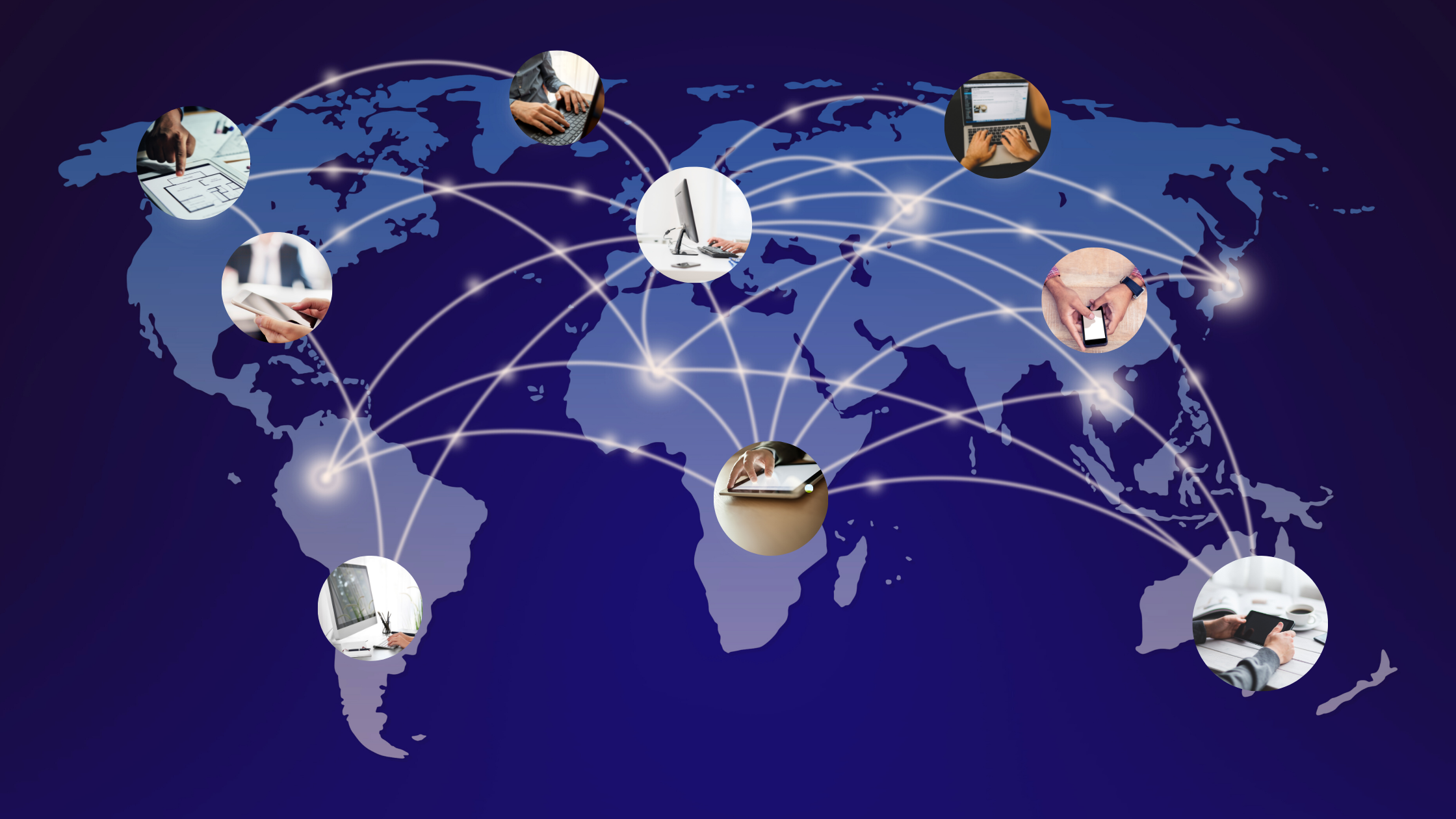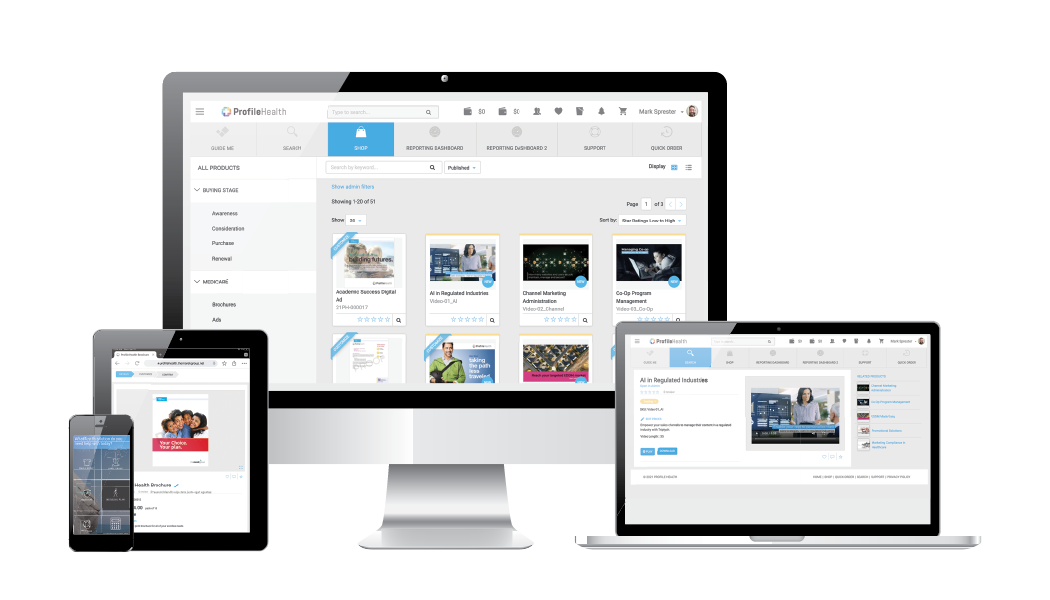4 min read
What is the distributed marketing? How can you use it to boost results?
 Jessica Dunn
:
February 18, 2019 at 11:05 AM
Jessica Dunn
:
February 18, 2019 at 11:05 AM

 The cookie cutter revolutionized cookie making. Using a cookie cutter, bakers no longer had to toil for hours carving cookie shapes. Not only did it save time and effort, but it also gave consistent results.
The cookie cutter revolutionized cookie making. Using a cookie cutter, bakers no longer had to toil for hours carving cookie shapes. Not only did it save time and effort, but it also gave consistent results.
Distributed Marketing Definition:
Distributed marketing is the cookie cutter for modern marketing. It produces a consistent message, saves time, and pools your resources by creating a co-operative between marketing channel partners.
Typical distributed marketing partners may include a larger corporation and smaller, local businesses. Larger corporations team up with smaller companies to improve their economies of scale. Smaller partners co-brand with bigger names and get access to a larger marketing budget. They also have the chance to personalize marketing messages at the local level.
With everyone benefiting from distributed marketing, you’ll want to get involved. But, how can it serve your industry and business needs?
Distributed marketing responds to the modern need for personalization.
The modern consumer landscape changes all the time with each advancement in technology. Data analytics, voice assistants, and artificial intelligence make buyer journeys more complex.
Consider Google's multifaceted campaign with Little Golden Books. Google advertised their digital assistants and Little Golden Books as a read-along package. Hardcover books, voice recognition, sound effects, and music together created an in-depth experience. The distributed marketing campaign also included various members. With in-store marketing at Target, Walmart, and Barnes and Noble, at least five different brands were working together.
When marketing becomes this complex, other issues arise. How will the different members work together? Who holds the new responsibilities, ownership, and consequences?
Marketers have a hard time achieving consistent brand strategy in such a partnership. Only about half of corporate marketers say they're "very effective" at delivering brand messages at the right time in the right channel. For local marketers, that number drops to less than a quarter.
Modern consumers also demand personalized content. As a result, businesses need to focus more on the customer. They have to provide localized, customized content. With such a demand, over 90 percent of marketers cite improving customer experience as their most pressing goal.
With these concerns on the table, how can you use distributed marketing to your benefit?
Harness the power in your industry.
Some industries are a natural choice for distributed marketing. It works well for manufacturers, retailers, healthcare, government suppliers, and financial products. Will it work for you if you’re in another industry?
A few things can make a distributed marketing campaign especially relevant for your business:
- Your channel partners are spread widely. Often the need to distribute marketing arrives out of need rather than desire. Local agents in a co-op model may have little extra money for marketing. Forming a co-operative with a larger player can provide a bigger marketing budget.
McDonald’s Monopoly promotion is an example of a financially-prosperous marketing campaign. The fast-food empire partnered with board game maker Hasbro to create it. The campaign took off like wildfire and boosted global profits year after year for decades.
- Your business is rapidly expanding. One of the biggest challenges for an organization is sudden growth in volume or output. Without supporting technology, you’ll only be able to support a small margin of your new prospects, buyers, and clients. In a typical scenario, the majority of your sales resources go to the top 10 percent of buyers. Using a distributed model can spread resources more evenly. A tech solution will also let you cover more ground with fewer sales reps.
- Your customers expect a consistent experience from your brand. Your brand messaging can get muddled and miss the mark when you have a large number of channel partners. Partners have their own ideas on marketing tactics, mediums, and content. But, distributed marketing enhances your brand consistency. By setting up clear guidelines for all touchpoints with prospects, it allows partners to send out a universal message.
- Your business is flexible in setting brand direction. This type of marketing isn't for owners who need to control every detail. It requires cooperation and a flexible mindset. All partners have a say in the end result. For example, you may need to hand over some control to outside sales reps. As channel partners, they represent your product. At the same time, they work for their own company. How much loyalty to your brand can you expect them to have?
Knowing when distributed marketing works best will assist you in deciding whether it’s right for your business. If you choose to use it, how can you overcome the challenges involved?
How can you roll out distributed marketing in your business?

While planning your distributed campaign, there are several key elements to have in mind:
- When the work of marketing is distributed among channel partners, there needs to be teamwork. Big and little partners need to work well together. Start small with your more trusted and open-minded channel partners before growing the team. Look for companies with common interests, such as values, markets, and geographical location.
- To work better as a team, sign a contract with each channel partner to confirm each member’s responsibilities. A clear understanding of individual responsibilities is essential. For example, what is the budget? Who will sign-off on content? What is the timeline for the campaign? All these factors will be sorted out with good communication and financial management.
- Centralize all knowledge and correspondence about the co-op campaign. Have it all in one repository that can be accessed at will. Centralizing lets you coordinate support and training, align brand messages, and harness automation. An online portal is a popular way to coordinate across partners. Eighty-eight percent of marketing leaders say they use or plan to use marketing automation platforms in areas like sales enablement.
- Be aware of compliance issues. Reducing legal mistakes keeps down costs. This is especially true if your industry is one with strict regulations on sales content, such as healthcare or government.
With these suggestions in place, getting a high return on your sales and marketing investment should be as easy as baking cookies.
Get better results with distributed marketing.
Business owners want to see improvements in distribution and supply chains. These back-of-house processes drive considerable gains in time and cost. To carry out these improvements, many big companies, such as Amazon and Walmart, rely on a software-based platform.
Marketing is no different. Improving distribution offers big opportunities. You can increase brand awareness, unify your message, and personalize the customer experience. To do so, you need a software platform that keeps your business knowledge in one place. It should also keep your sales and marketing pointing at your goals.
Triptych has a solution that performs all these functions. Specializing in distributed marketing, it brings real-time business intelligence, communication, and content together for all channel partners to view and edit. Speak to us today for a free demo.

Why You Need a SaaS Through Channel Marketing Automation Platform
Through-Channel Marketing Automation (TCMA) platforms allow businesses with distributed marketing programs to organize and distribute content and...





